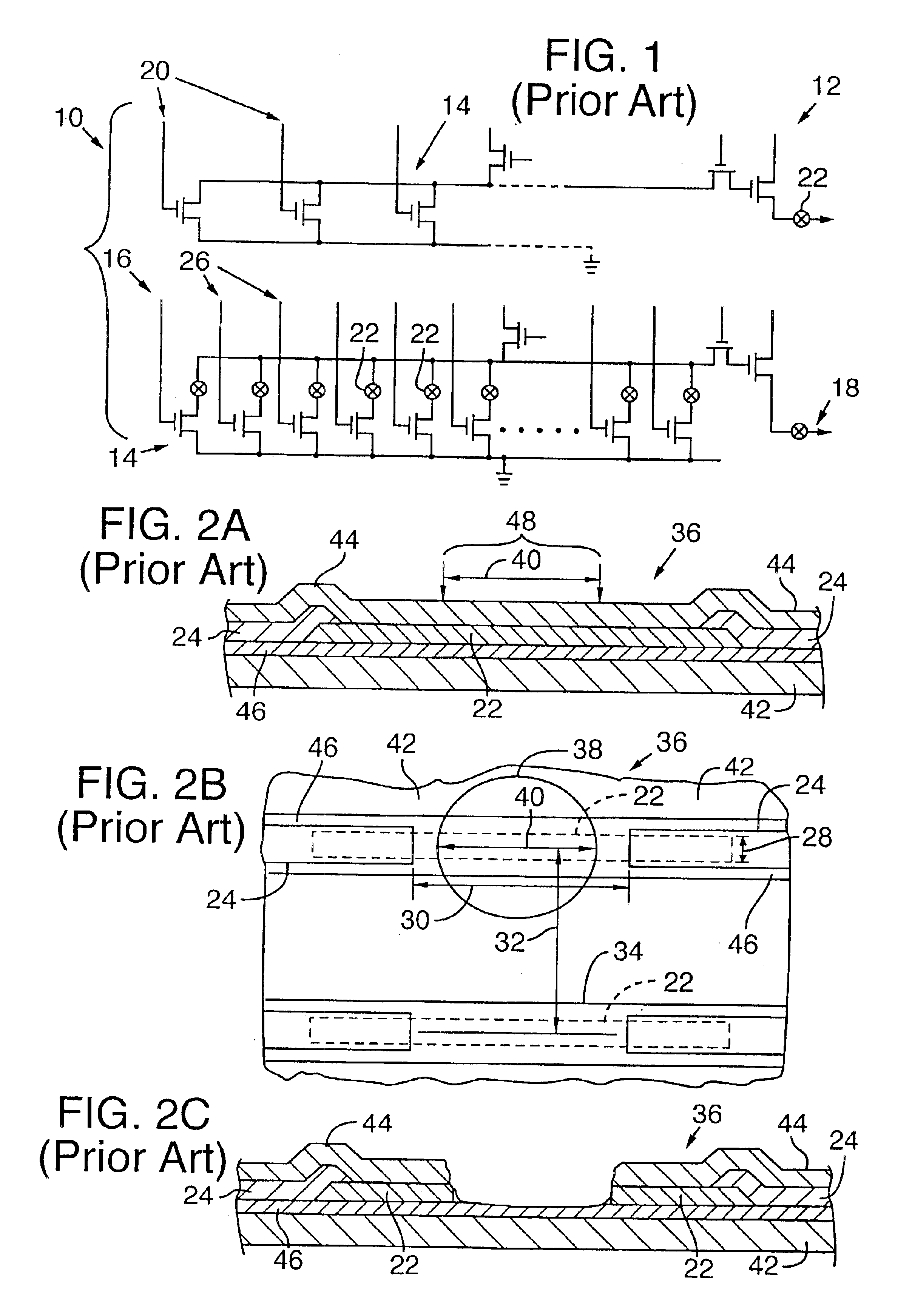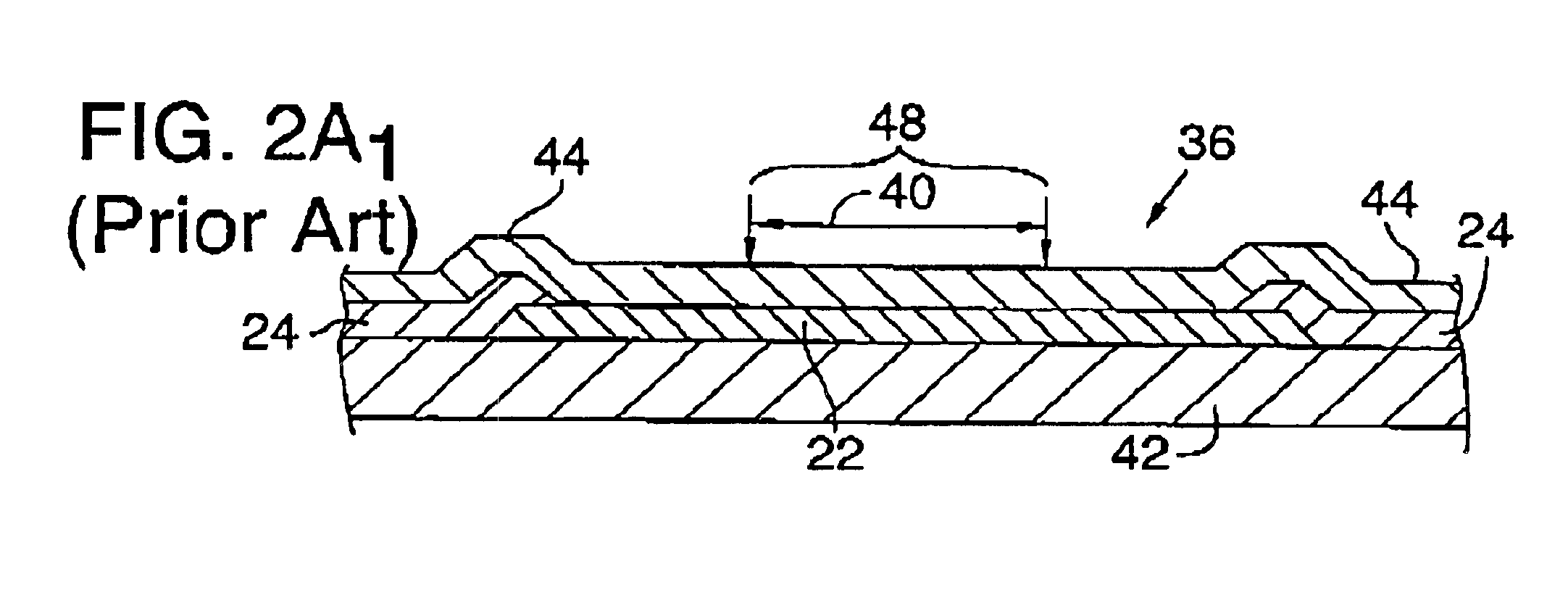Passivation processing over a memory link
a memory link and processing technology, applied in the field of passivation processing over a memory link, can solve the problems of incomplete link severing, deterioration of the quality of the device that includes the severed link, and increased laser pulse energy, so as to improve the processing quality for removal
- Summary
- Abstract
- Description
- Claims
- Application Information
AI Technical Summary
Benefits of technology
Problems solved by technology
Method used
Image
Examples
Embodiment Construction
[0043]FIGS. 3A, 3B, and 3C (collectively FIG. 3) are fragmentary cross-sectional side views of target structure 56 undergoing sequential stages of target processing in accordance with the present invention. Target structure 56 can have dimensions as large as or smaller than those blown by laser spots 38 of conventional link-blowing laser output 48. For convenience, certain features of target structure 56 that correspond to features of target structure 36 of FIG. 2A have been designated with the same reference numbers.
[0044]With reference to FIG. 3, target structure 56 comprises an overlying passivation layer 44 that covers an etch target such as link 22 that is formed upon an optional underlying passivation layer 46 above substrate 42. The passivation layer 44 may include any conventionally used passivation materials. Typical passivation materials include silicon dioxide and silicon nitride. The underlying passivation layer 46 may include the same or different passivation material(s...
PUM
| Property | Measurement | Unit |
|---|---|---|
| time offset | aaaaa | aaaaa |
| wavelength | aaaaa | aaaaa |
| wavelength | aaaaa | aaaaa |
Abstract
Description
Claims
Application Information
 Login to View More
Login to View More - R&D
- Intellectual Property
- Life Sciences
- Materials
- Tech Scout
- Unparalleled Data Quality
- Higher Quality Content
- 60% Fewer Hallucinations
Browse by: Latest US Patents, China's latest patents, Technical Efficacy Thesaurus, Application Domain, Technology Topic, Popular Technical Reports.
© 2025 PatSnap. All rights reserved.Legal|Privacy policy|Modern Slavery Act Transparency Statement|Sitemap|About US| Contact US: help@patsnap.com



